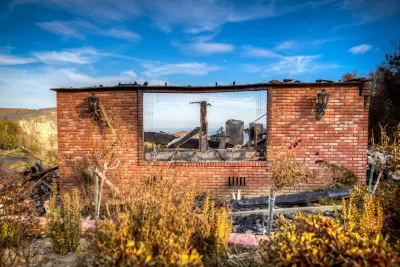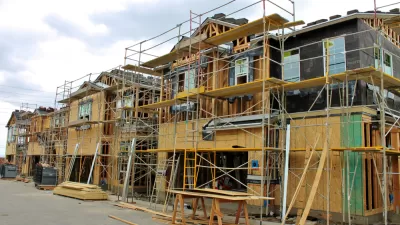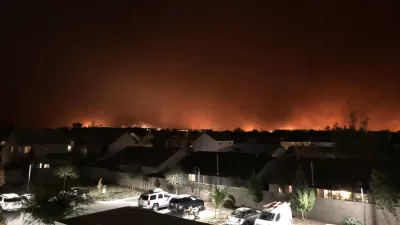In California, recovery after wildfires means many upfront investments by communities and the state.

California residents and communities are finding that post-wildfire costs are astronomical, report Thomas Fuller and Ian Penn. Some municipalities are having to shell out hundreds of thousands of dollars for backup generators in anticipation of power shutoffs during high-risk periods. In addition, insurance rates have skyrocketed in fire-prone areas, and insurers are not renewing some policies as well.
"Pacific Gas & Electric, which already charges among the highest electricity rates in the country, is requesting that regulators approve an additional charge to customers of $2 billion over the next three years to help pay for wildfire safety improvements and other costs," write Fuller and Penn.
The state is also shoring up for the disasters to come. Earlier this month, Governor Gavin Newsom signed a bill for a $21 billion wildfire fund to cover future liabilities. "Made worse by climate change, wildfires are adding a mounting financial burden in California, a state where taxes are already high and housing costs exorbitant," note Fuller and Penn.
FULL STORY: California, Wary of More Wildfires, Is Paying for Them Already

Maui's Vacation Rental Debate Turns Ugly
Verbal attacks, misinformation campaigns and fistfights plague a high-stakes debate to convert thousands of vacation rentals into long-term housing.

Planetizen Federal Action Tracker
A weekly monitor of how Trump’s orders and actions are impacting planners and planning in America.

In Urban Planning, AI Prompting Could be the New Design Thinking
Creativity has long been key to great urban design. What if we see AI as our new creative partner?

King County Supportive Housing Program Offers Hope for Unhoused Residents
The county is taking a ‘Housing First’ approach that prioritizes getting people into housing, then offering wraparound supportive services.

Researchers Use AI to Get Clearer Picture of US Housing
Analysts are using artificial intelligence to supercharge their research by allowing them to comb through data faster. Though these AI tools can be error prone, they save time and housing researchers are optimistic about the future.

Making Shared Micromobility More Inclusive
Cities and shared mobility system operators can do more to include people with disabilities in planning and operations, per a new report.
Urban Design for Planners 1: Software Tools
This six-course series explores essential urban design concepts using open source software and equips planners with the tools they need to participate fully in the urban design process.
Planning for Universal Design
Learn the tools for implementing Universal Design in planning regulations.
planning NEXT
Appalachian Highlands Housing Partners
Mpact (founded as Rail~Volution)
City of Camden Redevelopment Agency
City of Astoria
City of Portland
City of Laramie




























